Edinburgh, 45 High Street, John Knox's House
House (18th Century), Sundial (Period Unknown)
Site Name Edinburgh, 45 High Street, John Knox's House
Classification House (18th Century), Sundial (Period Unknown)
Alternative Name(s) John Knox House; Netherbow Centre
Canmore ID 52521
Site Number NT27SE 57
NGR NT 26092 73705
Datum OSGB36 - NGR
Permalink http://canmore.org.uk/site/52521


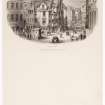
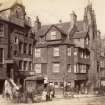
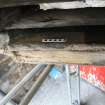


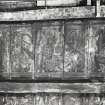
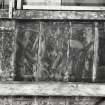
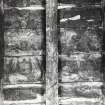
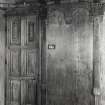
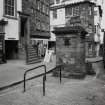
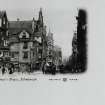
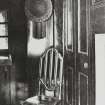

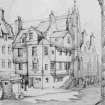
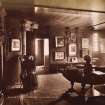
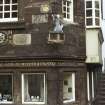
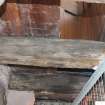

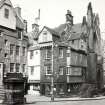
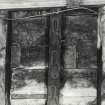
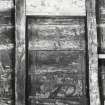
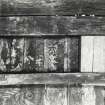

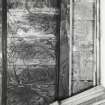
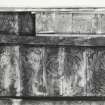
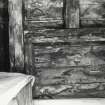
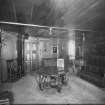
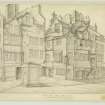

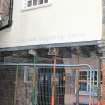
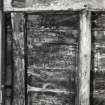
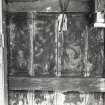
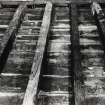
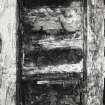
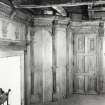


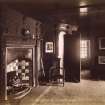
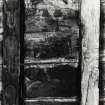
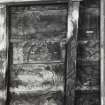
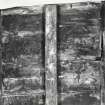
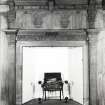
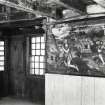
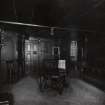
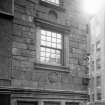
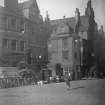
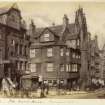

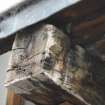
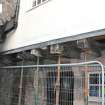

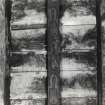
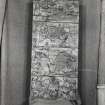
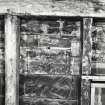
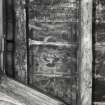
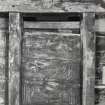
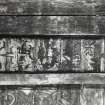
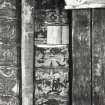
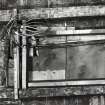
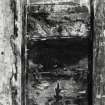
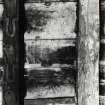

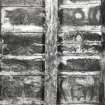
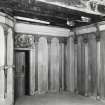
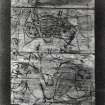
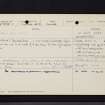
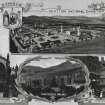
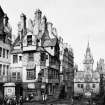

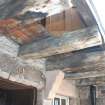
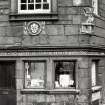
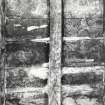
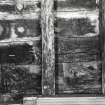
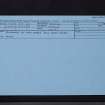
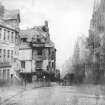
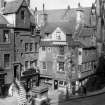
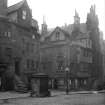
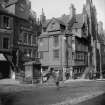
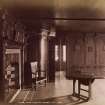

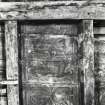
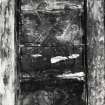
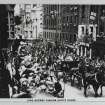


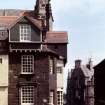
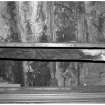


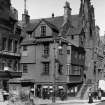
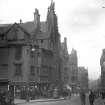
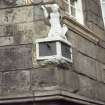
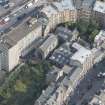
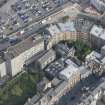
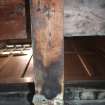
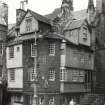
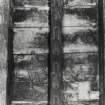

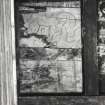
First 100 images shown. See the Collections panel (below) for a link to all digital images.
- Council Edinburgh, City Of
- Parish Edinburgh (Edinburgh, City Of)
- Former Region Lothian
- Former District City Of Edinburgh
- Former County Midlothian
NT27SE 57.00 26092 73695
NT27SE 57.01 NT 2609 7369 Trial excavation
NT27SE 57.02 NT c. 2609 7371 Watching Brief
(NT 2609 7369) John Knox's House: a manse occupied by John Knox between 1560 and 1569 when he was minister of St. Giles' Church. The house is first mentioned in 1525.
P Miller 1891; 1893; 1899; C T Guthrie 1891; 1899.
An unpretentious 16th century house in good preservation.
Visited by OS (J D) 26 December 1953.
A wall plaque describes it as being the house of John Knox.
Visited by OS 6 February 1953.
As described in previous information.
Visited by OS (S F S) 3 December 1975.
Restoration of the 16th century house allowed the excavation of two small exploratory pits within the building, immediately behind the High Street frontage. The sequence of construction and alteration of the cellars beneath the house was elucidated, and a small length of stone wall of a structure pre-dating the construction of the house was identified.
Sponsor: City of Edinburgh District Council.
M Collard 1992.
NT 2609 7370 A watching brief and standing building recording were carried out between April 2004 and July 2005 at the Netherbow Centre/John Knox House (NT27SE 57). Part of the redevelopment involved the removal of stonework associated with the former 20th century arts centre, which partly exposed the E-facing elevation of John Knox House. Foundation works within the basement were expected to lead to the recovery of medieval archaeological remains, but two test pits failed to provide any evidence.
A new internal opening through an arched press recess on the ground floor of John Knox House led to the recovery of a large oak lintel, which was submitted for dendrochronological dating. A felling date of 1560 was attained, and correlating evidence showed that the timber was imported from Norway.
The standing building survey recorded three blocked cupboards and floor-joist sockets associated with a former tenement building, one of several that were known to stand on the site before the construction of the Moray Knox Church.
Archive to be deposited in NMRS.
Sponsor: Malcolm Fraser Architects.
M Cressey 2005
Depicted on the coloured 1st edition of the O.S. 1:1056 scale map (Edinburgh and its Environs, 1854, sheet 36).
REFERENCE: EDINBURGH PUBLIC LIBRARY
Accession G.72284-1 print circa 1880.
REFERENCE: NATIONAL LIBRARY OF SCOTLAND
Country Life, April 15th 1939-p.398;
Country Life, January 3rd 1925-photograph;
WaterColour Sketches by Thomas Brown, Advocate, Vol II, Nos 33 and 34 Ref. Adv. MSS 34.8.1-3 -2 sketches;
MSS 3241-3-collection of sketches, etc, chiefly by James Nasymth, with some by his father, his brother Patrick and his sister Jane-in Vol 3241, numbers 10 and 11-dated 1821 and initialled J.N., early sketches in Edinburgh of John Knox's House and surroundings.
REFERENCE: SCOTTISH RECORD OFFICE
John Knox's house. Appeal for funds for its preservation and the settlement of the price paid for it originally. (Printed).
ND GD112/51/13
DESCRIPTION: Four floors high, numerous timber projections and gables hanging over the street (these are modern copies from the originals which had to be replaced).
Non-Guardianship Sites Plan Collection, DC23571- DC23574, 1901 & 1958- 1959.
Publication Account (1951)
39. "John Knox's House," 45 High Street.
The identification of this property as the manse occupied by John Knox between 1560 and 1569, when he was minister of St. Giles' Church, has been hotly contested, and as warmly supported, in the Proceedings of the Society of Antiquaries of Scotland, (1) where the protagonists, Dr. Peter Miller and Mr. Robert Miller (con) and Lord Guthrie (pro), have set out the evidence and arguments at length. A detailed examination of the facts by Dr. Marguerite Wood, Keeper of the Burgh Records, indicates that the connection of the building with the Reformer rests on a tradition which goes back no further than 1784, the year in which the Hon. Mrs Murray visited Edinburgh. In her Guide to the Beauties of Scotland, published in 1799, she mentions a "tottering bow-window to a house, whence Knox thundered his addresses to the people."
The first mention on record of a house in this position is in a sasine of 22nd December, 1525, (2) in which Christina Reidpeth or Arres conveys to her son John Arres the land or tenement which she had inherited from her father Walter Reidpeth. From John Arres the property descended to his daughter Mariot and is next mentioned in a sasine of 1556, (3) where the owners are given as the said Mariot Arres and her husband James Mosman, the couple whose armorial bearings are carved upon a part of the front which is an obvious addition to the earlier structure within. Since the sasine is an ante-nuptial contract and Mosman was forfeited and executed at the Cross in 1573, in company of Kirkcaldy of Grange, the ashlar addition can be dated to within seventeen years; while the primary building to which it was attached may not be older than 1544, for it is unlikely that such an important house as that of John Arres should have escaped destruction in Hertford's invasion. Mosman's property was escheated after his death and the house passed in 1573 to John Carmichael by Royal Charter. (4)
If its immediate connection with John Knox is open to question, the house at the foot of the High Street that goes under his name has other claims to recognition as being not only the most picturesque of the historic dwellings of Edinburgh but also the sole remaining example on which the timber galleries, once so common, are yet to be seen. The house undoubtedly owes its survival to its traditional association with the great Reformer, for in 1849 it was condemned to destruction by the Dean of Guild Court as a ruinous fabric and an encumbrance to the street. The proprietor, strongly supported by the Society of Antiquaries of Scotland under the leader-ship of Sir Daniel Wilson, then Honorary Secretary, successfully resisted the order, and the house was thereupon repaired at great cost. The roof was renewed. The upper portion of the front wall, above where the outside woodwork begins, was taken down and rebuilt with the old stones. (5) Missing parts were reconstructed, and modern insertions were removed. More recently the lower rooms were fitted up as a library and gallery for the works and portraits of Knox and his contemporaries.
The original structure is now merely a kernel encased by accretions on each of the exposed sides. But although these as they stand are of later date than the nucleus, something of the sort probably existed from the beginning, particularly as the weather-table for the W. gallery roof seems to be an original provision. Oblong on plan and containing four main storeys between the cellarage and the attic, the building runs N. and S., extending from an open space at the back, now known as Ashley Court, to beyond the general line of frontage; it thus projects into the street, which narrowed at this end through the convergence of the sides towards the Nether Bow Port, the E. gateway of the burgh. Along the W. side of the house and beneath the gable of Moubray House runs a passage wholly enclosed to-day but once giving entry to Hope's Court, now merged in Ashley Court. On the E. is the Moray-Knox Church. The house appears to best advantage from a point lying to the S.W., on the opposite pavement (Fig.258). From here may be seen part of the oblong rubble-built nucleus rising unencumbered, each of its gables bearing crow-steps and a chimney-stalk but all considerably restored. Its W. and S. walls represent the original building-lines, which on the two upper floors were concealed by the galleries. On the S. elevation a forestair at the E. end gives access to the first floor. This stair is not original but replaces an earlier one, common both to this property and to Lord Balmerino's House, which stood immediately to the E. on the site now occupied by the Moray-Knox Church. The lowest part of the S. front is an ashlar screen-wall, built at a slightly later time than, and about 4 ft. in advance of, the original front wall. It has a splayed base and above are three delicately-moulded windows with moulded sills of considerable projection. The central window, however, was in the first instance a doorway.* Above the street floor projects a wooden gallery lit by hung sash-windows except at the W. corner, where there is a casement. This gallery stops at the upper part of the forestair and leaves exposed part of the original front wall, in which a moulded doorway opens directly into a newel-stair within. The fan-light over the door is unlikely to be original, but a continuous corbelling immediately above it must be early. On the second floor a second gallery, also lit by sash-windows, projects a little farther out and extends E. to shelter the head of the forestair. On the third floor is a small gabled projection of lath and plaster, tile-hung at the sides, a modern replacement of an original feature. One of the original garret-windows can still be seen, built up, in the main wall behind.
The S.W. corner of the building is splayed back. This corner and the adjoining part of the W. wall are constructed as a unit in a thin ashlar screen up to the roof of the second floor, above which the ashlar work on the W. is surmounted by a gabled projection of lath and plaster. This ashlar work is obviously later than that to the S., for the two parts meet in a butt-joint while the base of the S. one is worked to a corner stop. On the lowest storey the ashlar work includes windows, one of them at the corner, and a doorway to the W., all four openings being moulded like those to the S. Above runs a nicely-moulded architrave, frieze and cornice, the central member carrying an inscription LVFE GOD ABVFE AL AND YI NYCHTBOVR AS YI SELF, the last three words extending across the splayed corner. On the westernmost angle, one course above the cornice, is a sundial having two faces below which are clouds and, above, a figure of Moses shown kneeling on a mount; he holds the Tables of the Law in his left hand and points with his right to a sun in splendour, issuing from clouds and inscribed with the triple repetition [theta, epsilon, omicron, sigma] DEVS GOD. The whole represents the delivery of the Ten Commandments, as described in Exodus xxiv, 16, 17. The dial-faces and gnomons are modern.
On the first floor there is a finely-detailed Renaissance window facing towards the W.; it is framed within pilasters, a moulded sill, and an entablature from which two vases rise as finials. On either side of the window is a small garland, and below it there is an armorial panel. On this is carved a garland flanked by two sets of initials separated by cinquefoils, the upper pair, I M, standing for James Mosman and those below, M A, representing his wife, Mariot Arres. Within the garland is a shield charged: Ona chevron between three oak-trees, three crowns. Above the window, and corresponding with the garland below it, there is a circular dead-light with ·a moulded margin, for which space is barely available under the moulded sill of a window on the second floor. The second-floor window and two others on the corner are moulded like those in the base of the W. and S. frontages. On the N. side of the section just described the building is set back at street level to the original line of frontage, but higher up it is advanced in galleries constructed in lath and plaster. The lower part of the back or the building is hidden by a two-storeyed addition, itself of some antiquity but now quite uninteresting, and above this the main back wall has been considerably rebuilt.
[see RCAHMS 1951 pp.96-99 for a full architectural description of which this is part]
RCAHMS 1951
(1) Vols. xxv (1890-1), pp. 138 and 333; xxvii (1892-3), p. 406; and xxxiii (1898-9), pp. 80 and 249. (2) Protocol Book of Vincent Strathauchin, s.a. (3) Protocol Book of Alexander King, v, p. 101. (4) P.S.A.S., xxv (1890-1), p. 141. (5) Ibid., p. 333.
Publication Account (1981)
Located in the High Street, the so-called John Knox's House is one of Edinburgh's most picturesque houses and is also the sole remaining example of the timber-fronted galleries which were once so common in the capital city (RCAM, 1951, 97). The house is four storeys high with a floor beneath ground level. The claim that it was John Knox's House goes no further back than 1784 (RCAM, 1951, 96), and was the subject of a spirited debate in the freceedings of the Seciety of Antiquaries of Scot-land in the late nineteenth century. C. Guthrie went to great lengths to attempt to prove that the house was indeed that of John Knox (1890-91, 333-351), but P. Miller argued convincingly that the dwelling belonged to Geerge, Abeot of Dunfermline. Miller also pointed out that two great early historians of Edinburgh, Maitland and Arnot, make no mention of the house (1890-91, 138-153). After receiving the advice of the Dean of Guild that it was in a ruinous condition and ought to be removed, the house was instead extensively restored in 1849 (Guthrie, 1890-91, 333).
Information from ‘Historic Edinburgh, Canongate and Leith: The Archaeological Implications of Development’ (1981).
Project (1997)
The Public Monuments and Sculpture Association (http://www.pmsa.org.uk/) set up a National Recording Project in 1997 with the aim of making a survey of public monuments and sculpture in Britain ranging from medieval monuments to the most contemporary works. Information from the Edinburgh project was added to the RCAHMS database in October 2010 and again in 2012.
The PMSA (Public Monuments and Sculpture Association) Edinburgh Sculpture Project has been supported by Eastern Photocolour, Edinburgh College of Art, the Edinburgh World Heritage Trust, Historic Scotland, the Hope Scott Trust, The Old Edinburgh Club, the Pilgrim Trust, the RCAHMS, and the Scottish Archive Network.
Field Visit (14 August 2002)
Coat of arms composed of a shield on which is a chevron decorated with three crowns. Above the chevron are two trees, below is one tree. The shield is within a wreath of foliage. Flanking the wreath are the initials of James Mosman and his wife Mariota Arres.
At the corner of the building, between the ground and first floors, is a figure of Moses kneeling on top of a sundial. In his left hand he holds a tablet, his right hand is raised, and he is looking up at a panel on which is an image of a sun coming out of the clouds. On the sun are the Greek, Latin and English words for God. [Moses formerly had a miniature late 18th century pulpit below him, so that he looked like John Knox preaching. The pulpit was taken inside the building (1)]
Either side of the entrance and ground floor windows are four wooden panels carved in low relief. The museum sign panel (1) has, below the date 1450 a bird pecking a hare's ear, below the date 1556 a flower, below the date 1850 a ribbon, and below the date 1990 a rose. The next panel (2) is carved with a portrait of John Knox, standing in profile, holding a bible. Above the date 1513 at the top is a scroll and quill. At the bottom of the panel are two arches. The next panel (3) is carved with a portrait of Mary Queen of Scots, standing in profile, holding rosary beads. Above the date 1542 at the top is a lion rampant and two fleurs de lis. At the bottom is a lion passant guardant. Either side of the letter R is a thistle. The fourth panel (4) is carved with a portrait of James Mosman standing in profile, holding a money bag. Above the date 1530 at the top is a flag on a pole decorated with a crown.
The building dates back to 1450. Christina Arres conveyed the house in 1525 to her son John. Mariota Arres inherited it in 1556, and the building was completed in its present form in 1561.
The sculpture was restored in 1850 by Alexander Handyside Ritchie.
The building became known as John Knox House after John Knox spent his last months there.
The wooden panels are by John Donaldson. They are hung on the façade when the building is open, and taken inside when it is closed.
James Mosman was goldsmith to Mary Queen of Scots. He was executed in 1573 for remaining loyal to her after her exile.
John Knox lived in the house from August to November 1572, after his return from St Andrews. He died there on 24 November.
Inspected By : K.M.Withey/D.King
Inscriptions : On entablature above ground floor windows (raised gold letters): LVFE . GOD . ABVFE . AL . AND . YI . NYCHTBOVR [on west side of building] / AS . YI . SELF [on south side]
Flanking the wreath containing the coat of arms (raised gold letters): I M / M A [= James Mosman and Mariota Arres]
On the sun above the figure of Moses (raised gold letters): [the Greek for God] / DEUS / GOD
On the panels (raised gold letters):
(1) JOHN / KNOX / HOUSE / & / MUSEUM / 1450 / 1556 / 1850 / 1990
(2) 1513 / 1572 / JOHN / KNOX
(3) 1542 / 1587 / MARY / R
(4) 1530 / 1573 / JAMES / MOS / MAN
Signatures : None
Design period : C16th (originals)/1850 (restoration)/1990 (panels)
Information from Public Monuments and Sculpture Association (PMSA Work Ref : EDIN0758)
Dendrochronology (18 May 2016)
AOC Archaeology Group was commissioned by ARPL Architects to undertake a programme of detailed recording and dendrochronological sampling of joists on the first floor of the medieval John Knox House on the Royal Mile, Edinburgh. The joists have suffered from wet rot, and repairs are required to make them safe. The dendrochronological analysis has resulted in the calendrical dating of two of the joists which suggests that the source of the timber used came from southern Norway. One of the joists was felled in 1559 AD. Previous dendrochronological work on a lintel within the house produced a felling date of 1560 AD and so it is possible that the lintel and the joists were part of the same phase of renovation in 1560 AD or soon after.
Information from Anne Crone and Diana Sproat (AOC Archaeology Group) May 2016. OASIS ID: aocarcha1-253523
Note (16 April 2020)
Restoration/ conservation work at John Knox's House has been carried out intermittently over many years. This includes architects such as Hippolyte Jean Blanc regarding interior paneling in the 1880s. See Dictionary of Scottish Architects online resource.
Information from Survey and Recording section (MMcD), HES, 16 April 2020.









































































































